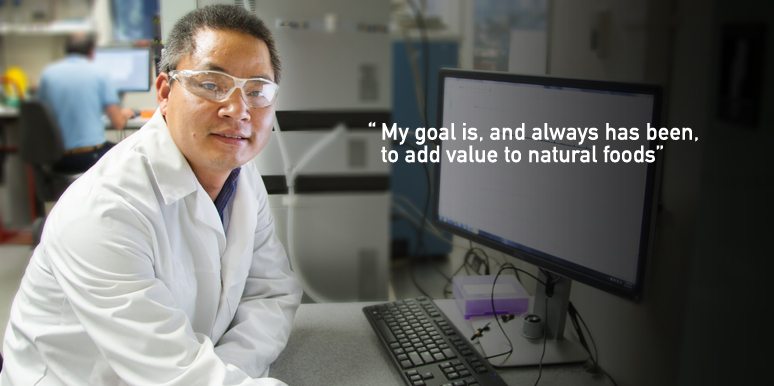Zapping your food in the microwave has the potential to unlock many more culinary and health benefits, as Australian food scientist Dr Quan Vuong has found during years of research.
Vuong works at the University of Newcastle on the New South Wales central coast and specialises in finding ways to “add value” to natural products by extracting bio-active compounds with anti-oxidant capacities.
Thanks to the British TV drama Broadchurch, his research on the best way to brew a cup of tea is making headlines across the world this week.
The Brits were outraged when the show’s star, played by David Tennant, microwaved his cuppa.
However, in 2012, Vuong set out to extract, isolate and purify the important components of green tea and black tea.
He found this method activated 80 per cent of the caffeine, theanine and polyphenol compounds, and generated the best taste:
- Put hot water in the cup with the teabag.
- Heat in the microwave for 30 seconds on half power.
- Let it sit for a minute.
Polyphenols are antioxidants which are linked to good health properties like lowered cardiovascular disease and lower cholesterol, hypertension and diabetes.
Theanine is an essential amino acid that promotes relaxation and can be found in tea, some other plant foods and mushrooms.
“In food products, people are concerned with health benefits but also with food quality and shelf life,” Vuong said.
“Microwaving is one of the advanced technologies to get more bio-active compounds from the products.”
He said the health benefits are linked to high consumption or equivalent to more than three cups of tea a day.
The method can apply to herbal teas and loose tea leaves, he said.
What else can you microwave?
Since his tea study, Vuong has investigated how microwaving other household or industrial food products to recover bio-active compounds could be used by the food industry and to reduce waste.
In 2016, he found that microwaving lemon pomace — the leftover skin, pulp and seeds after a lemon is squeezed — for five minutes at 480 watts enhanced the total phenolic content, flavonoids, pro-anthocyanins and total anti-oxidant activity.
Flavonoids and pro-anthocyanins are groups of phenolic compounds linked to health benefits.
“Lemon or apple pomace which is coming from the food factories still has anti-oxidants. So if we can recover the benefits from this waste, we can make more functional food products,” Vuong said.
Vuong also successfully recovered properties in macadamia nut skins.
The optimal microwave settings were 4.5 minutes, power of 30 per cent or 360W with a sample to water ratio of 5g/100ml.
“We are world number one in macadamia production,” Vuong said.
“The skin and the husk is normally sent to waste and has no value. But the skin is actually high in phenolic compounds.
“The phenolic compounds could be used in functional food production in the food industry. They are linked with anti-cancer and cardiovascular disease and potent anti-oxidant properties.”
Extracting Australian natives
Vuong’s next project is to investigate the benefits of Australian plants.
He has so far tested the optimal microwave settings for extracting bio-active compounds from eucalyptus robusta leaf (three minutes, 600W power and 2g/100ml sample-to-solvent.)
Eucalyptus oil is used in cosmetic and pharmaceutical products and the aromatic and non-volatile compounds have high anti-oxidant properties linked with lowering pancreatic cancer in-vitro and killing cancer cells.
Only eight to 10 species of eucalyptus are currently used and exported, although there are some 800 different species which Vuong said are yet to be studied.
His upcoming research is to study the beneficial compounds of Kakadu plum.
“We mainly dry this product and export to US but it has one of the highest levels of vitamin C in the whole fruit kingdom,” he said.







